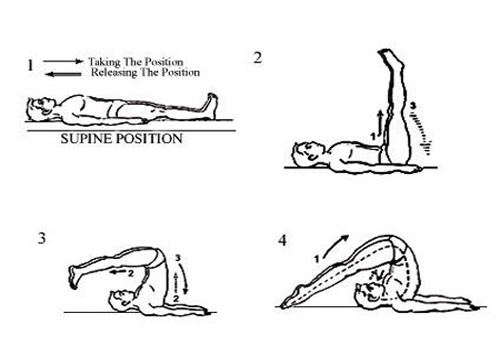Pose type Inversion | Also known as Plow pose | |
 | ||
Note Consult a doctor before beginning an exercise regime Stretches Shoulder, Vertebral column Preparatory poses Sarvangasana, Setu Bandha Sarvangasana Follow-up poses Paschimottanasana, Adho mukha śvānāsana Similar Sarvangasana, Dhanurasana, Matsyasana, Bhujangasana, Paschimottanasana | ||
Yoga plow posture halasana with kino
Halasana (/hʌˈlæsʌnʌ/; Sanskrit: हलासन; IAST: Halāsana) or Plow Pose is an asana.
Contents
Etymology
The name comes from the Sanskrit words 'hala' (हला) meaning "plow" and 'asana' (आसन) meaning "posture" or "seat".
Description

The practitioner lies on the floor, lifts the legs, and then places them behind the head. Experienced practitioners may enter Halasana from a standing position by tucking chin to chest, placing hands on the floor, walking the feet towards the hands and bending at the elbows to lower shoulders to the floor.
Health Benefits

Cautions

This asana can put significant strain on the cervical spine, which does not normally undergo this type of stress, and can cause injury if not performed properly.

Practicing this pose without leg support can lead to injury. To provide support for the legs, practitioners may elevate the feet on props such as blocks or on the seat of a chair instead placing the feet directly on the floor. As alternatives, simply lying on the back and raising the legs into a hamstring stretch, or doing a seated forward bend may be appropriate.


